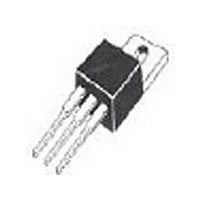IXCP100M35 IXYS, IXCP100M35 Datasheet - Page 3

IXCP100M35
Manufacturer Part Number
IXCP100M35
Description
IC CURRENT REGULATOR TO220AB
Manufacturer
IXYS
Series
IXCr
Datasheet
1.IXCY02M45.pdf
(3 pages)
Specifications of IXCP100M35
Function
Current Regulator
Current - Output
100mA
Operating Temperature
-55°C ~ 150°C
Mounting Type
Through Hole
Package / Case
TO-220AB
Product
Current Regulators
Lead Free Status / RoHS Status
Lead free / RoHS Compliant
Voltage - Input
-
Accuracy
-
Sensing Method
-
Lead Free Status / Rohs Status
Compliant
Fig. 6a. DC surge suppression
Fig. 6b. Incoming surge/output surge
Application Examples
DC and AC Overvoltage
Suppression
The regulator can be used as a
voltage surge suppressor. The device
is again connected in series with the
lead (Fig. 5) and would normally
operate at a current level lower than
the plateau (Fig. 6a). Any incoming
voltage surge (Fig. 6b) less than the
breakdown voltage of the regulator will
be clamped by the IXCP regulator to
voltage less than the plateau current
times the effective resistance of the
load.
Soft Start-Up Circuits
Here the regulator characteristic will
clamp initial current surges which can
occur when power is initially applied
to a load. The device, with its 450 V
capability could, for example, be used
with a DC power supply or with AC
mains to limit the initial high inrush of
current into lamp filaments, thereby
increasing the filament life several
times. It could, therefore, be used
effectively in lighting displays and in
the transportation lighting industries.
Highly Stable Voltage Sources
Another obvious application would be
to use the current regulator as a
IXYS MOSFETs and IGBTs are covered by 4,835,592
one or moreof the following U.S. patents:
across load
4,850,072
4,881,106
4,931,844
5,017,508
5,034,796
Fig. 5. DC surge suppression
Fig. 7. Simple voltage source with
source of a highly stable current to
produce a usable voltage reference
(Fig. 7). This would be effectively
independent of temperature and a low
cost approach. A high voltage
reference is also possible, thanks to
their high breakdown voltages.
Instantaneous "Fuse"
Another application would be
protection against sudden voltage
droops on voltage supply lines to logic
cards in computing systems, resulting
from one component suddenly
shorting to ground. Normal fusing
networks will draw considerable
current during the time it takes for the
fuse to clear. This could cause a
sufficient dip in power rail voltage to
cause malfunctions of the other logic
cards, even with fast-blow fuses (Fig.
8). The current regulator in series with
the logic card restricts the current to
its own operating level (Fig. 9).
Therefore the voltage supply does not
become overloaded and the regulator
remains intact.
The current regulator thus provides an
"instantaneous fusing" function. When
the logic component is replaced, the
regulator resumes its normal
functioning mode.
R = 100 Ω
R = 50 Ω
R = 25 Ω
5,049,961
5,063,307
5,187,117
high stability
V
V
V
5,237,481
5,381,025
5,486,715
out
out
out
= 3.5 V nominal
= 1.75 V nominal
= 0.875 V nominal
3
6,162,665
6,259,123 B1
6,306,728 B1
6,404,065 B1
6,534,343
6,583,505
Fig.8. Low cost current regulators
The obvious advantages to having this
regulator as fuse substitute are:
Fig. 9. Normal fusing links in
Testing & Handling
Recommendations
Prevents a "dip" in the power
supply during a fault condition
Regulator remains intact
Can be easily tied in with logic to
indicate a "down state" board
For initial assessment of the parts
where the customer may test the
device characteristics in free air
without heat sinking, the continuous
power dissipation should be kept
within 1.5 W at ambient of 25
(R
R
Normal electrostatic handling
precautions for MOS devices
should be adhered to.
6,683,344
6,710,405B2
6,710,463
thJA
thJA
instead of fuses
= 100 K/W for TO-252)
series with each board
= 80 K/W for TO-220, and
6,727,585
6,759,692
IXC Series
°
C.




